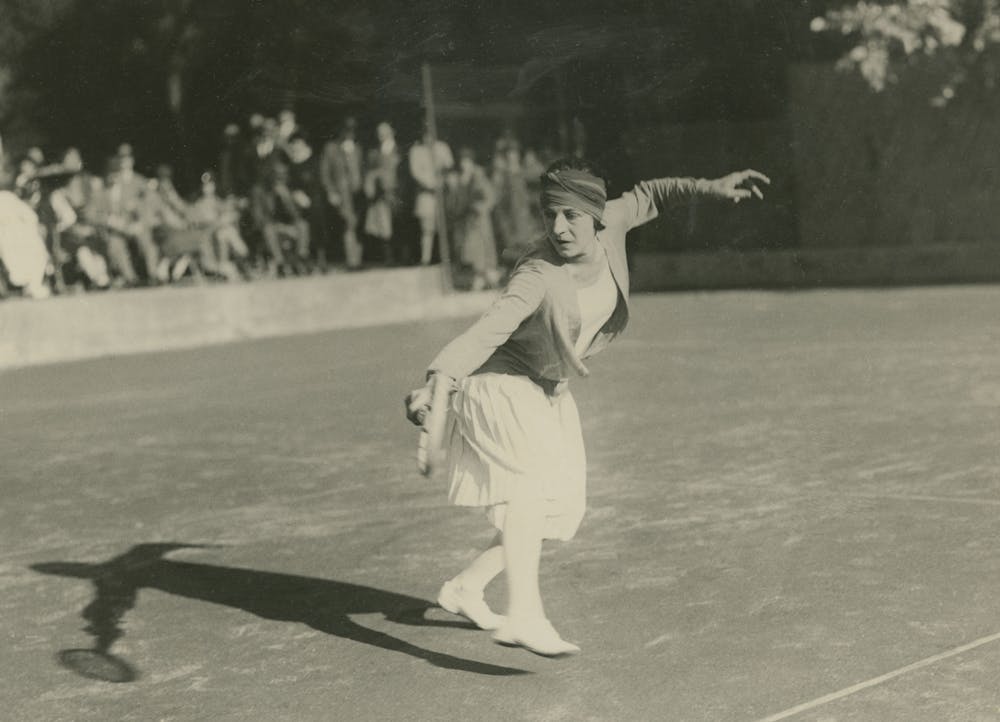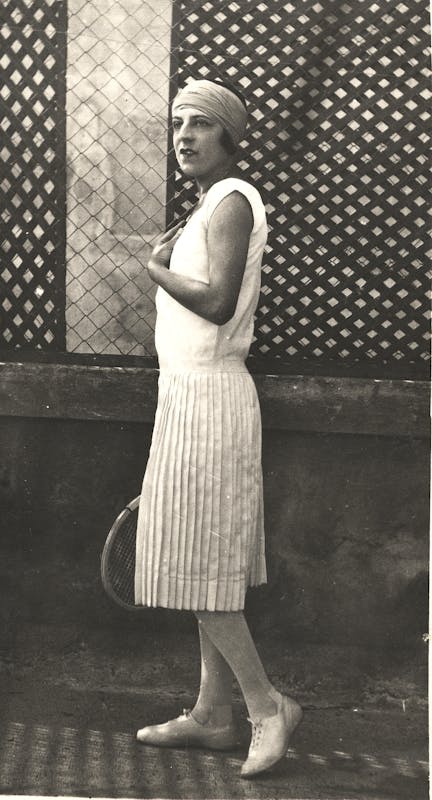Read more
RG Diary: What's in a name?
Please upgrade to the latest version for best user experience.
You can also try using other popular browsers.
Update my browser
The woman who shook up the tennis world with her extraordinary behaviour and style.

You might have been lucky enough to stroll along the walkway that bears her name in Roland Garros stadium: Suzanne Lenglen, a pioneer for French tennis during the belle epoque, was a character who will never be forgotten. Here, we shine the spotlight on the life of this great tennis diva, who still inspires female tennis champions today.
A trailblazer for women’s tennis and a legendary star of Roland Garros, Suzanne Lenglen was the first French female player to make a name for herself on the world stage. Suzanne Rachel Flore Lenglen, winner of Roland Garros at the tender age of 14, was born in 1899 in the 16th arrondissement of Paris. Boasting an unparalleled honours list (241 tournaments won, 2 Olympic gold medals and 171 consecutive victories), she greatly influenced the future of tennis.
A woman ahead of her time, she will always be remembered at the Porte-d’Auteuil, as in the very heart of the stadium, the second-largest show court was named after the champion in 1997 and her eponymous trophy is awarded to the winner of the women’s singles tournament every year.
La coupe Suzanne Lenglen attend sa reine / Trophy is ready @LouisVuitton #RG17 pic.twitter.com/1x0xoqbyu8
— Roland-Garros (@rolandgarros) June 10, 2017
There is a fine line between being an idolised champion and a temperamental diva… Suzanne Lenglen’s strong personality and hot-headedness led to various exploits that shocked the tennis world. At Wimbledon in 1926, scandal broke out when, tired and angry at the time of her match being changed, Lenglen refused to play, despite the fact that Queen Mary was in the stands and had come especially to see her. This unfortunate incident led to her career being cut short, her being banned from the professional American circuit, and her French Tennis Federation membership being cancelled for life.

"She jumps, leaps, hits balls in the air, lifts her leg to the sky for a smash: we’ve never seen anything like it. […] The spectators are fascinated by her grace and the speed at which she moves.” Jean Lovera
Transforming into a true sporting diva, Suzanne Lenglen performed for the crowds at every match, punctuating her game with her singular behaviour and ballet-like movements.
In the 1920s, tennis helped to make tanned skin fashionable, thanks to dressmaker Jean Patou. The designer set women’s bodies free and unveiled them to the world, namely that of the great champion of the period, Suzanne Lenglen, who revolutionised the dress code of women’s tennis and at the same time promoted a brand new trend… the suntan!

A modern, free and emancipated woman, Suzanne Lenglen played an important role in breaking the customs of the time. Following her lead, the female sporting champions of the Roaring Twenties, who represented this new generation of women, proudly sported a new style of dress. Sportwear was born!
Having grown accustomed to taking care of her appearance, Suzanne Lenglen commissioned Jean Patou (whose muse she would later become) to make her a pleated white silk skirt that fell just above the knee, a sleeveless cardigan, stockings held up by garters and a tulle bandeau to put in her hair.
From 1922, "La Divine" strayed away from traditional white tennis clothes and dared to wear bright colours, inspired by the time’s Art Deco movement.
She adopted a new way of dressing to improve her game, leaving her ankles and arms uncovered (a first!). Suzanne Lenglen bravely affirmed female independence, thus becoming a figurehead for women’s liberation.
"As long as the last net is still fulfilling its role, until the last shot goes out for the very last time, kneeling, sitting or standing, the people will chant in all languages – even in English – about the undying glory of Suzanne Lenglen ". André Lichtenberger and Étienne Micard.